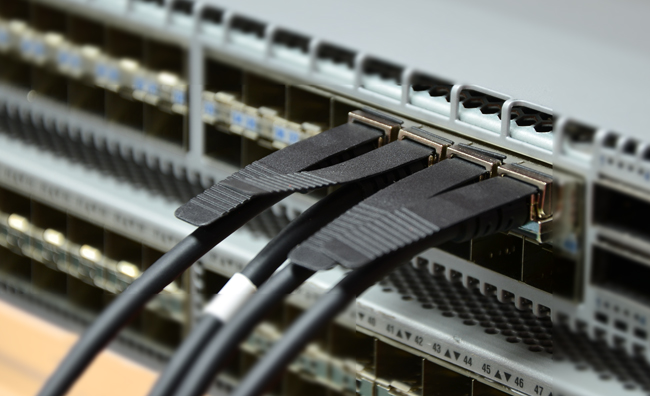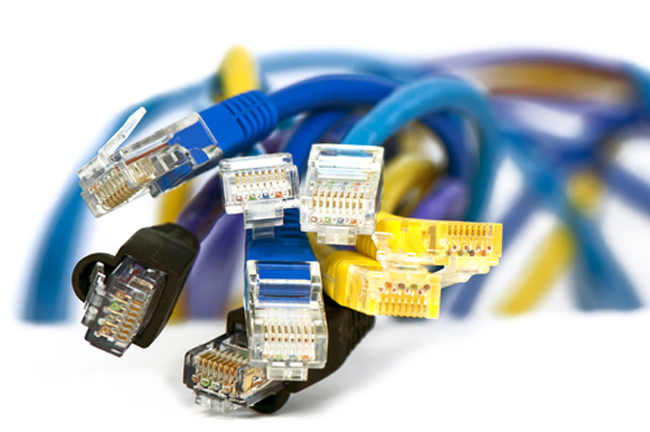Nowadays, though fiber becomes popular with the benefit of delivering the lowest latency, many IT departments still use copper cabling for switch-to-switch or switch-to-server connections in 10G Ethernet (10 GbE). Currently, there are two major copper cabling technologies applied for 10 GbE over copper. What are they?
As the following table shown, one of the 10GbE copper cabling options is the SFP+ Direct Attach Copper Cable (DAC Cable), and the other one is the 10GBASE-T with twisted-pair Ethernet cable. In the following section, they are respectively introduced in details.
| Media | Copper Cable | Distance (max) | Average Latency | Standard |
| SFP+ DAC | Twin-ax copper SFP+ Cu | 10 m (33 ft) | 0.1 μs | MSA SFF-8431 |
| 10GBASE-T | Twin-pair Category 6 RJ45 | 30 m (98 ft)-50 m(164 ft) | >1.5 μs | IEEE 802.3an-2006 |
| Twin-pair Category 6A RJ45 | 100 m (328 ft) | >1 μs | ||
| Twin-pair Category 1 GG45 | 100 m (328 ft) | >1 μs |
SFP+ is the form factor for 10GbE optical transceivers. 10G SFP+ DAC cable is designed with SFP+ connectors on two ends of a twin-ax copper cable. Because of its low latency, small form factor, and reasonable cost, it has become the preferred and convenient 10GbE copper cabling option for servers and storage devices in a rack, usually within 10 meters (33 ft). 10G SFP+ DAC can help simplify rack cabling and termination. For instance, in a ToR (Top of Rack) architecture, each server and network storage device can be directly connected to the ToR switch without the need for intermediate patch panels. Moreover, 10G SFP+ DAC is flexible enough for vertical cabling management within the rack architecture. The only cabling outside the rack is the ToR switch uplink connection to the aggregation layer, making moving racks easy.

10GBASE-T was released by IEEE 802.3an in 2006 which specifies 10Gbps data transmission over four-pair copper cabling. 10 GbE over CAT 6A cable and CAT 7 cable that use RJ45 connectors can reach up to 100 meters. Among them, CAT 6A is currently the preferred cable option for future-proofing cabling installations and widely used in 10GbE copper cabling. In addition, when using CAT 6A in 10 GbE systems, choosing the right cable type, namely unshielded or shielded (e.g. UTP or F/UTP) is also necessary. In general applications, the UTP cabling is commonly used. But for long-term consideration and noisy environment, the F/UTP may be better.

10G Ethernet over copper still plays an important role in the data center switch/server interconnection. Current copper cabling choices for 10G Ethernet include SFP+ DAC and 10GBASE-T with Ethernet cables. Each of them has its own advantage. The SFP+ DAC is convenient for short runs while the 10GBASE-T solution is perfect for a long-term plan at a longer distance. Only the right one is the best. So, how do you plan your copper cabling for 10 GbE?
Related Articles:
How to Build 10GbE Network for Small and Mid-Sized Business?
10Gigabit Ethernet Transceiver Options for Server Connectivity



